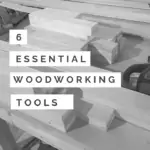Finding the best tools to start out can be a daunting task, but it can be broken down into simple parts so that you can get started. I started out with a drill and miter saw, and over time I added tools like a table saw, planer, various sanders, etc.
For the most part, you will simply add tools as you go and as you encounter projects that need them.
I’ve added my top 8 tools below, and the rest of the post looks more in depth at the tools you will likely need as you proceed along your woodworking and diy journey.
My Top 8 Tools for Beginner Woodworking
You can make a lot of projects with just these tools, and add more as needed. I did not add a table saw because it’s not beginner friendly, but it is extremely useful later on.
- Miter Saw
- Random Orbital Sander
- Power Drill
- Pocket Hole Jig
- Clamps of various styles
- Circular Saw (with track) or Track Saw
- Tape Measure (At least 3)
- Hammer/Mallet
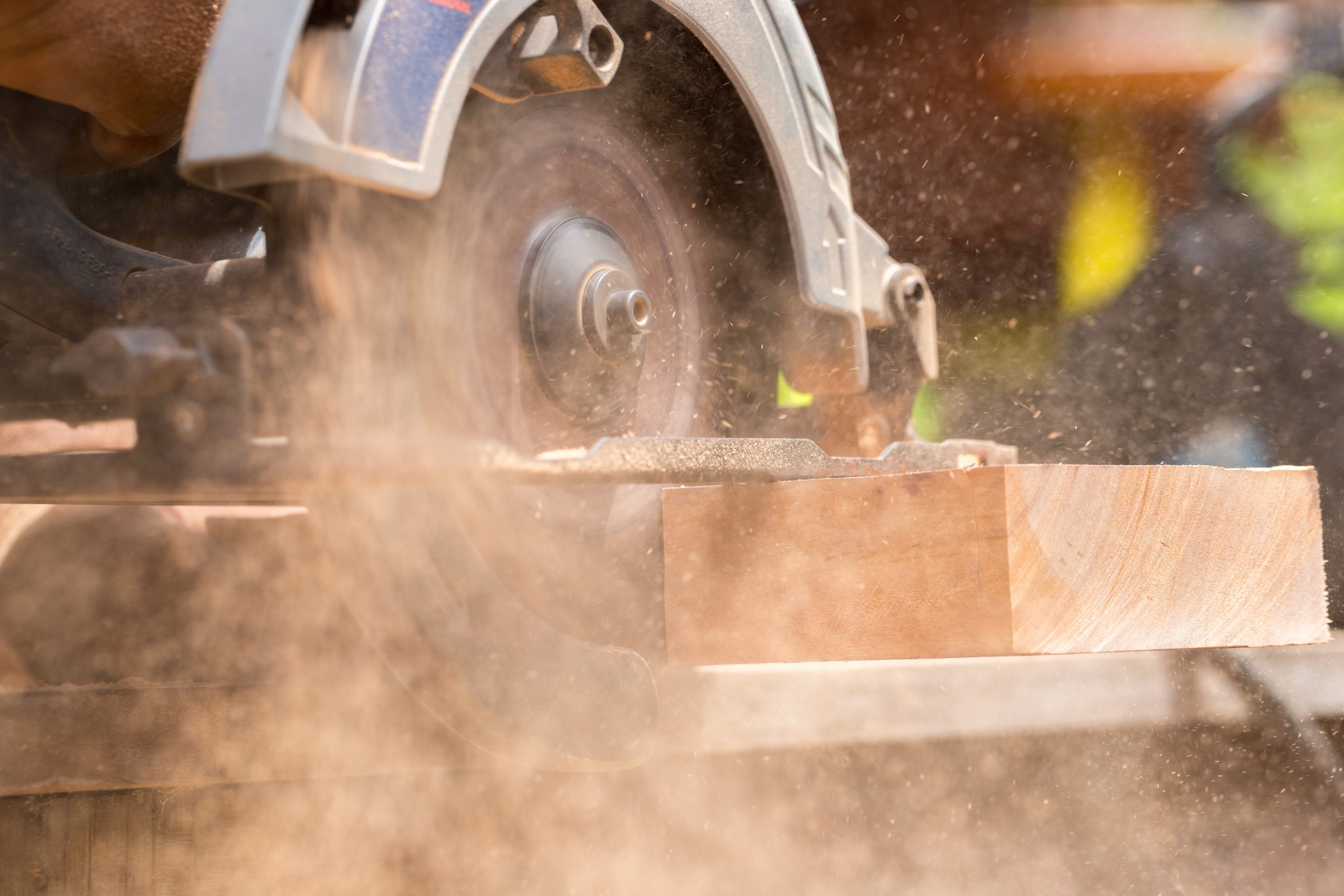
About Woodworking Tools
Woodworking is an incredibly rewarding and versatile craft, allowing you to transform raw materials into functional structures, intricate carvings, and stunning pieces of heirloom quality furniture.
At the core of this age-old craft lies a seemingly infinite array of woodworking tools and techniques that, when harnessed with skill and precision, can elevate your projects to works of art.
Whether you’re a complete beginner or a seasoned professional, there are certain essential woodworking tools that should grace every workshop.
From accurate measuring, marking, and layout tools to a diverse range of power and hand tools, these foundational instruments play a critical role in helping you achieve your creative goals.
It’s important to invest in high-quality equipment that can stand the test of time, ensuring you have a reliable and effective toolkit to call upon for any project, large or small.
Main Points of this Article
- Essential woodworking tools encompass a variety of power and hand tools, ensuring precision and efficiency in your projects
- Proper measuring, marking, and layout tools are crucial for accuracy, while holding, fastening, and assembly tools boost productivity
- Prioritizing proper sharpening, maintenance, and safety will prolong the life of your equipment and ensure a successful woodworking experience
Undeniably Essential Tools
When starting your woodworking journey, it’s crucial to have the right tools on hand. This will make your projects much more enjoyable and give you confidence in your abilities. Here are some essential tools you should consider stocking in your workshop.
Saw: It’s nearly impossible to think of woodworking without a good saw. A reliable miter saw is an indispensable tool that can make precise crosscuts and angle cuts with ease. Additionally, a portable table saw is great for ripping boards and handling tasks that circular saws can’t accomplish.
Square: Accurate measurements are the backbone of woodworking. A carpenter square helps you ensure that your angles are square and your joints are well-fitted. This tool is essential for accurate layout and project assembly.
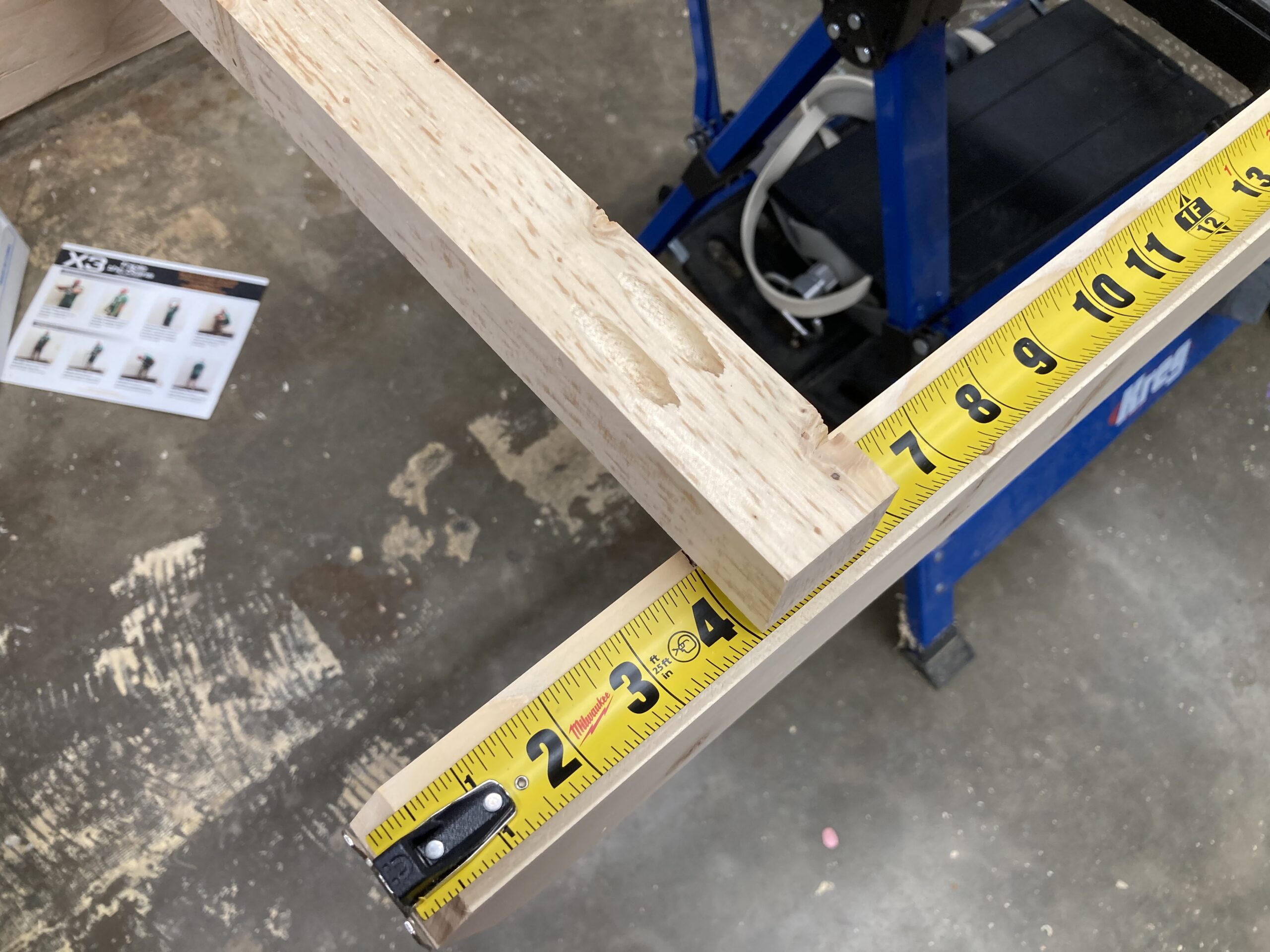
Tape Measure: A reliable tape measure is invaluable for taking precise measurements during woodworking projects. A retractable tape measure with a locking mechanism is a popular choice, as it allows you to take longer measurements with ease.
Screws: Proper fasteners are necessary for holding your wooden creations together. Screws offer a stronger bond than nails and allow for easier disassembly if needed. You should keep a variety of sizes and types on hand to suit different project needs.
Pencils: Marking your cuts and measurements is crucial for accuracy and precision. Good quality pencils with a sharp point allow you to make visible, fine marks on your wood pieces. Remember to keep a sharpener handy too.
Incorporating these essential tools into your woodworking arsenal will ensure that you’re well-prepared for any project that comes your way. Equip yourself with these indispensable items, and soon you’ll be crafting beautiful and functional pieces with confidence and precision.
I will add a pocket hole jig to this list as well. I use it on the majority of my projects.
Power Tools and Their Uses
This is far from an exhaustive list, but we are focusing on covering some of the most prominent and essential tools here.
A drill is a versatile tool, useful for creating holes in wood, driving screws, and even mixing paint. They come in both corded and cordless varieties. When it comes to choosing a cordless drill, consider my guide for the best drill to help you decide.
A router is another essential power tool. It can create slots and grooves, shape edges, straighten material, and even make joinery. With a wide range of bits and cutters available, routers offer incredible versatility.
An orbital sander is used for smoothing surfaces, removing paint, or preparing woodworking projects for finishing. Its oscillating motion ensures even sanding results, making it easier to achieve a polished surface.
Miter saws are designed for making precise angled cuts in wood, which are especially useful for creating moldings and frames. These saws can make both straight and beveled cuts, providing accurate and consistent results every time.
Table saws are used for making long, straight cuts in wood. With their large working surface, table saws allow for precision and control, making them an indispensable tool for any serious woodworker.
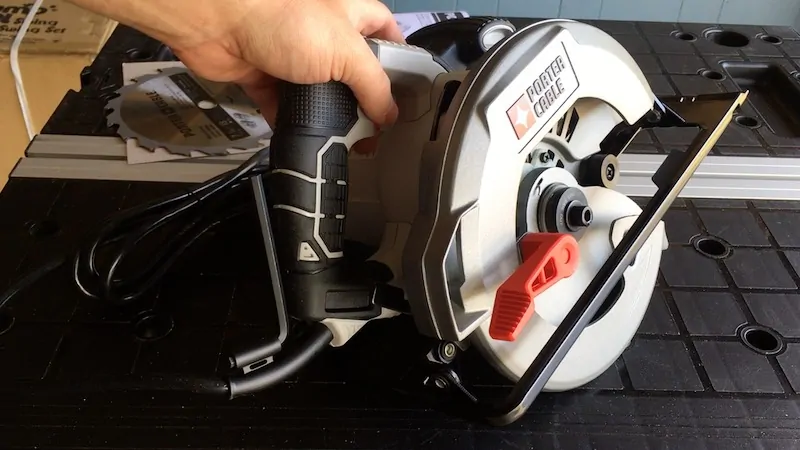
A circular saw is a powerful cutting tool that can make straight, beveled, or mitered cuts in wood. They are portable and versatile, making them perfect for woodworking projects that require mobility and flexibility.
A circular saw is especially helpful if you have track you can use with it. This allows you to break down large sheets of plywood, very similar to a “track saw”. Sometimes this can be used instead of a table saw.
When selecting a circular saw, consider the Best Circular Saw for Beginners guide to help you choose a model with the right features.
A lathe is a specialized woodturning tool used for shaping pieces of wood into cylindrical forms. By spinning a piece of wood at high speeds, lathes enable the user to create curved, tapered, and textured shapes, such as bowls, spindles, and legs.
A lathe is not needed unless you want to specifically do these types of projects.
Finally, band saws are used for cutting irregular shapes, resawing, and cutting precise curves in wood. With their continuous looped blades and versatile cutting capabilities, band saws can handle both intricate and straight cuts, making them an essential tool for any woodworking shop.
A jig saw can be used instead of a band saw for many applications, but it is always nice to have both. For beginners, I would recommend only a jig saw.
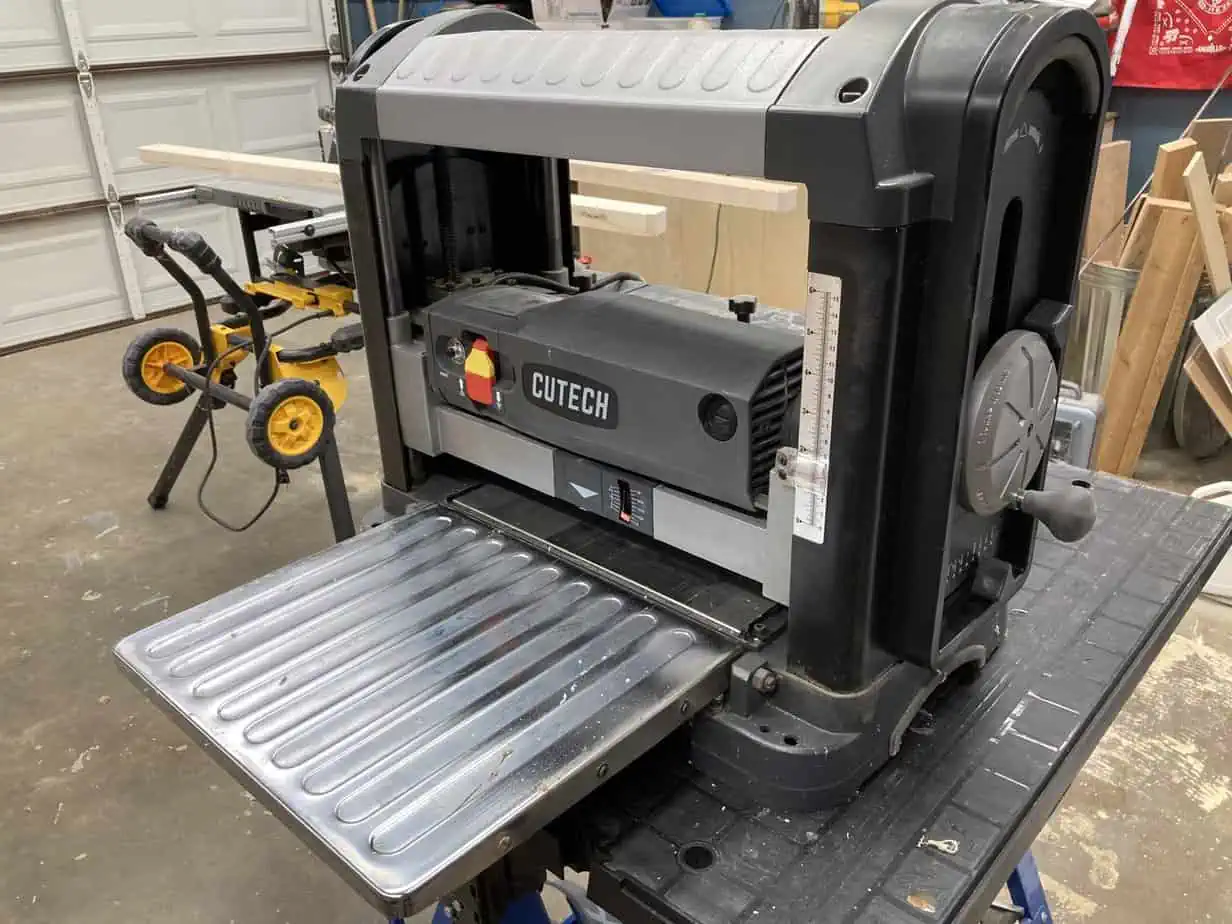
A Planer and Joiner are great tools to add to fill out a nice woodshop. I use both of these quite often to help dimension lumber and create a smooth surface.
Hand Tools for Detailed Work
When working on fine woodworking projects, having the right hand tools is essential for achieving precision and accuracy. In this section, we’ll discuss some of the key hand tools that can help you with detailed work.
Hand Planes are indispensable for smoothing and shaping wood surfaces. A well-tuned hand plane can provide a smooth, flat surface that’s difficult to achieve with through other means.
There are various types of hand planes, such as smoothing planes, block planes, and jointer planes, offering versatility for different tasks.
Chisels come into play when you need to make precise cuts and carve detailed elements in your woodwork. A good set of bench chisels with different widths and blade shapes can help you create intricate designs and joinery.
Always keep your chisels sharp for the best results and consider using a mallet for better control and force.
Mallets are useful for driving chisels through wood without causing damage to the tool handles. A good wooden mallet will absorb the shock, easing the stress on your hand and arm during long woodworking sessions.
Opt for a mallet with a comfortable grip and weight that suits your style of work.
Using a Hand Drill can allow for precision when making holes in your workpiece. A hand drill, also known as a brace, provides more control over the drilling process compared to a power drill, making it suitable for creating accurate holes in delicate projects.
Pair your hand drill with a good set of bits to handle various drilling tasks in your woodworking journey.
In conclusion, investing in high-quality hand tools like planes, chisels, mallets, and hand drills can greatly improve the precision and craftsmanship of your woodworking projects.
These tools allow for better control and accuracy, helping you tackle intricate and detailed work with ease and confidence.
Measuring, Marking, and Layout Tools
As a woodworker, having the right measuring, marking, and layout tools is essential to ensuring precision and accuracy in your projects.
With these tools, you can make precise measurements, mark cuts, and establish the correct angles for your woodworking tasks.
One fundamental tool you need in your arsenal is the combination square. This versatile tool allows you to measure and mark both 45-degree and 90-degree angles on your workpieces with ease. With a combination square at hand, you can confidently lay out cuts for miters, bevels, and other angle-dependent joints.
Next, make sure you have a reliable tape measure and ruler. These two measuring tools will provide measurements for larger and smaller workpieces, respectively.
Choose a tape measure that’s easy to read and equipped with a locking mechanism. For rulers, opt for those made of metal or other durable materials to ensure longevity and accuracy.
In terms of marking your measurements, invest in a high-quality marking knife or pencil. The marking knife scores precise lines along the measured points, while pencils are suitable for jobs that require less accuracy. Keep your marking tools sharp and ready to use at all times.
Finally, let’s discuss the importance of gauges and squares for achieving accurate layouts. Gauges help you transfer specific measurements onto your workpiece, while squares ensure the correct angles in your project. Common types of squares used by woodworkers include:
- Try square (for checking 90-degree angles)
- Framing square (for larger projects)
- Sliding bevel (for setting and marking various angles)
By having these essential measuring, marking, and layout tools in your workshop, you will improve the precision and accuracy of your woodworking projects. With practice and expertise, you’ll be able to create beautiful, functional pieces that showcase your craftsmanship.
Holding, Fastening, and Assembly
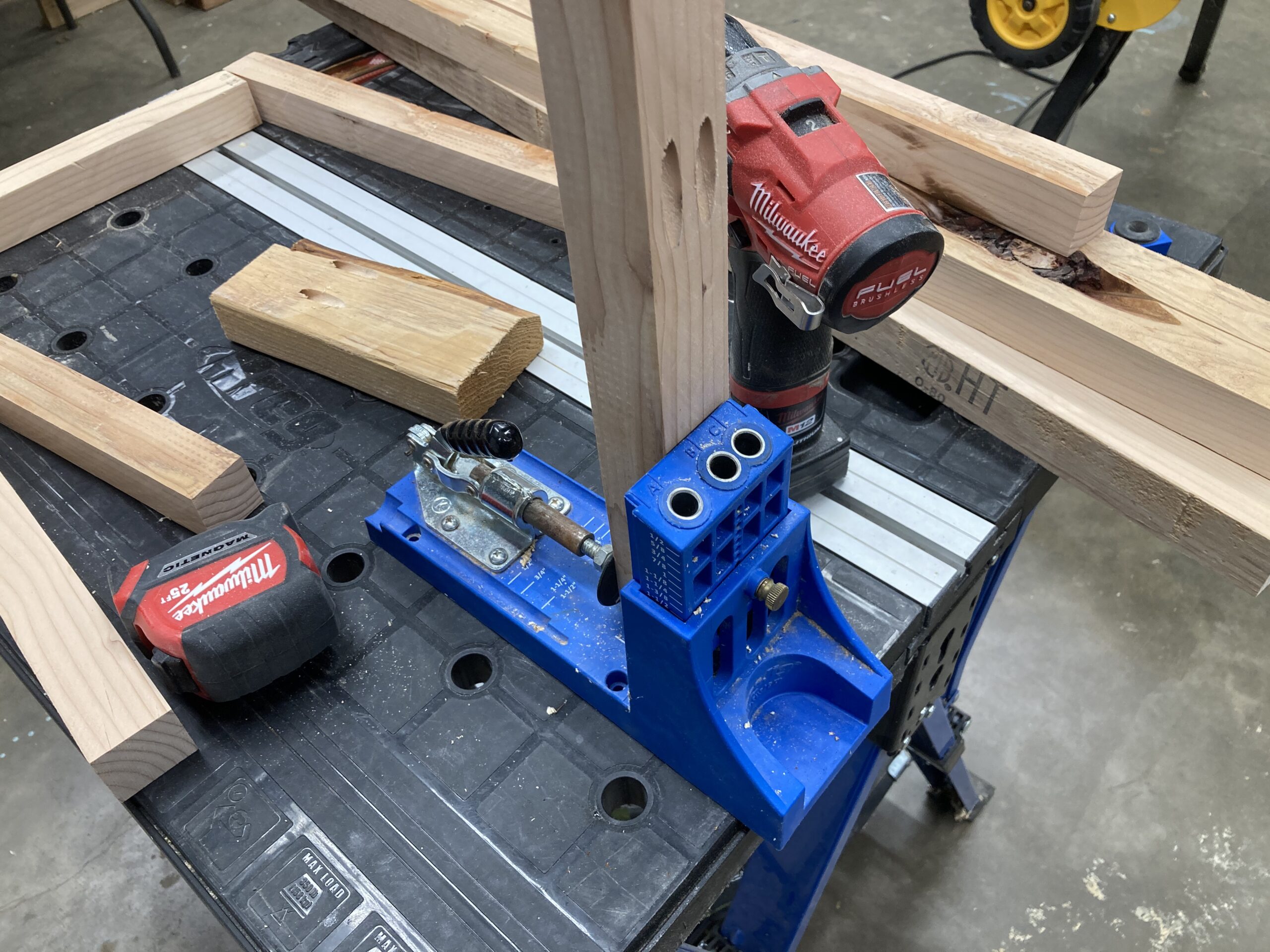
In woodworking, proper holding, fastening, and assembly techniques are crucial to ensure your workpieces stay together securely. This section will cover essential tools and methods for achieving strong and accurate connections in your projects.
One important tool for holding your workpieces together during assembly is clamps. Clamps come in various types and sizes, including bar clamps, C-clamps, and pipe clamps, among others.
These devices play a vital role in holding your materials in place, providing even pressure across joints, and allowing you to work with both hands when needed. Choose the appropriate clamps depending on the size and requirements of your project.
Glue is another essential component for holding and assembling wood joints. Wood glue, such as PVA or polyurethane, provides strong and long-lasting bonds and is typically used in combination with other fasteners for added strength.
Make sure to spread the glue evenly across the joint surfaces and clamp them firmly together while the glue dries. Be cautious of using too much glue, as this can cause issues with the joint quality and make it difficult to clean up any excess.
When it comes to fastening your workpieces, various fasteners can be utilized, including screws, nails, dowels, and biscuits. The choice of fasteners depends on the type of joint, the material, and the design requirements.
For example, a pocket hole jig is an invaluable tool for making strong and hidden joints using screws. The jig helps create accurate pocket holes, allowing for screws to join materials at an angle for increased holding power.
Lastly, the assembling process requires careful planning and precise execution. Begin by dry-fitting your workpieces to ensure a proper fit, and make the necessary adjustments if needed. Once satisfied with the fit, apply glue, and use the appropriate fasteners to secure the joints.
Don’t forget to clamp your workpieces tightly while the glue dries, and double-check the alignment, ensuring your assembly stays square and level.
By using the right tools and techniques for holding, fastening, and assembly, you can achieve professional results in your woodworking projects. Remember to practice and refine your skills for improved accuracy and efficiency.
Sanding, Finishing, and Dust Collection
Sanding is a crucial step in woodworking projects, as it smooths the surface of the wood and prepares it for finishing. A good quality sander, such as a random orbital sander, can save you time and effort in achieving a fine finish.
When it comes to finishing, there are various wood finishes available in the market, such as stains, varnishes, and polyurethane.
The choice of finish depends on your desired aesthetics and the intended use of the furniture or item you’re working on. Properly applying wood finish enhances the appearance and durability of the wood.
Dust collection also plays a significant role in woodworking, especially during the sanding process. Sanding generates large clouds of fine dust particles, which can pose a risk to your health. Therefore, it’s essential to invest in an efficient dust collection system.
A dust collector helps capture dust particles generated during sanding, cutting, or grinding operations in your workshop. A well-designed dust collection system not only improves air quality but also extends the life of your tools by keeping them clean and preventing overheating due to dust buildup.
To improve dust collection effectiveness, consider adding a cyclone separator ahead of the dust collector, which can trap up to 99% of the chips and dust in a drum, making them easier to empty. Attach the dust collection system to tools like sanders, table saws, and other equipment generating dust.
In conclusion, sanding, finishing, and dust collection are essential aspects of woodworking that contribute to the quality, appearance, and longevity of your projects.
Using proper tools, techniques, and equipment in these processes can make a significant difference in the final outcomes and the safety of your workshop environment.
Sharpening and Maintenance
Proper sharpening and maintenance of your woodworking tools are crucial to ensure their best performance and longevity. By taking care of your tools, you not only improve your safety but also enhance their overall efficacy.
Sharpening: Regular sharpening is essential for maintaining the sharp edges of your woodworking tools. For most tools, such as chisels and plane blades, use a good quality sharpening stone with both coarse and fine grits.
Wet the stone prior to use and make sure you maintain the correct angle while sharpening. Hold the tool steadily and use back-and-forth strokes on the stone, gradually transitioning from the coarser grit to the finer one for a razor-sharp edge.
For carbide blades, you’ll need a diamond sharpening stone or a specialized carbide sharpening tool. Carbide blades are harder than steel, so traditional honing stones will not work. Follow the manufacturer’s recommendations and guidelines for sharpening your specific carbide tools.
Maintenance: Regular maintenance varies based on the type of woodworking tool. Here are some general recommendations:
- Clean your tools after each use to remove dust, chips, and debris. Use a soft brush or cloth to prevent damage to cutting edges.
- Protect your tools from rust by applying a thin layer of oil or rust-preventative solution on metal surfaces, especially during storage.
- Ensure that your tools are stored in a clean, dry environment to avoid moisture-related damage.
- Periodically inspect your tools for signs of wear, damage, or dullness. Sharpen or repair as needed to maintain optimal performance.
- Lubricate any moving parts in your tools, such as the adjustment mechanisms on planes or the pivot points on saws. This will help maintain smooth operation and minimize friction-related wear.
Workshop Equipment and Safety
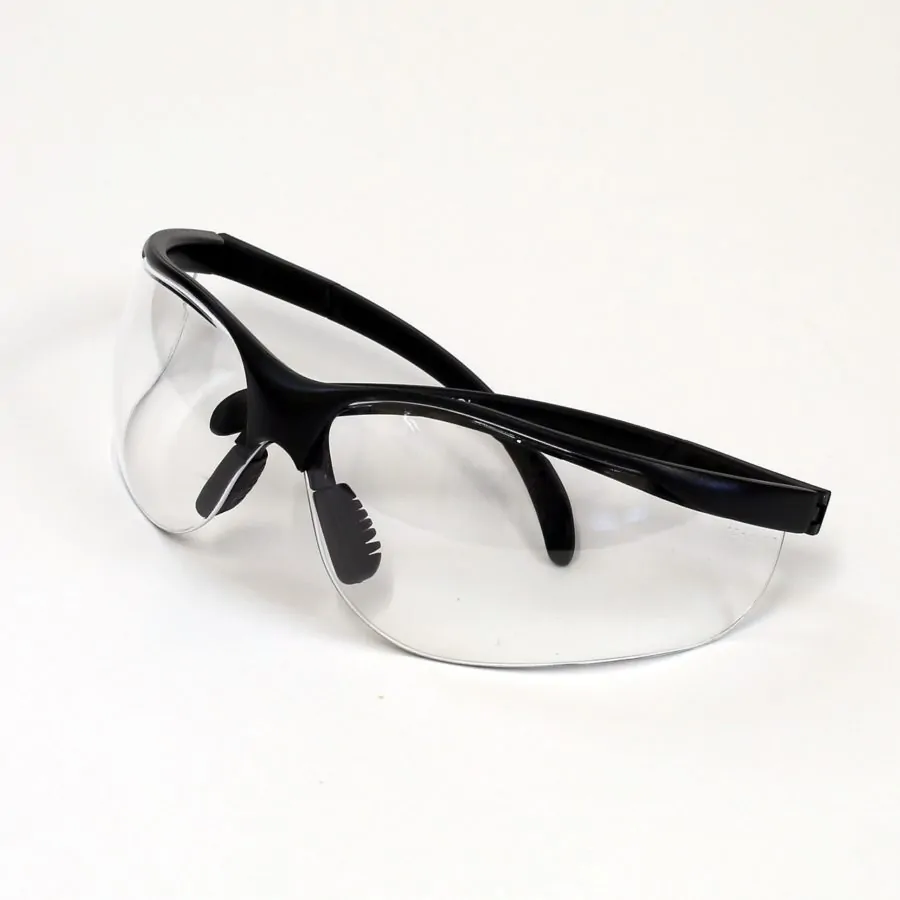
When setting up your woodworking shop, it’s crucial to prioritize safety and have the essential tools in place. Start by ensuring you have a sturdy workbench that can handle the weight of your projects and resist vibrations. It should be at a comfortable height, allowing you to work efficiently and without straining yourself.
It’s essential to invest in high-quality safety equipment to minimize the risk of accidents or injuries in your woodworking shop. Some must-have safety items include:
- Safety goggles: Protect your eyes from dust, debris, and flying particles.
- Hearing protection: Use earmuffs or earplugs to safeguard your ears from prolonged exposure to loud noises.
- Dust mask or respirator: Protect your lungs from inhaling harmful dust particles and fumes. Choose either a basic dust mask or a more advanced respirator depending on the level of protection needed.
- Leather apron: Shield your clothing and body from cuts, abrasions, and hot or sharp objects.
- Cut-resistant gloves: Keep your hands safe from cuts, punctures, and abrasions when handling sharp tools or materials.
- Anti-vibration gloves: Reduce the vibrations from tools, minimizing the risk of long-term damage to your hands and fingers.
- Steel-toe boots: Protect your feet from heavy objects and sharp tools that could fall or be dropped.
Remember, maintaining a clean and organized workspace is a vital component of workshop safety. Store your tools and equipment in dedicated storage spaces when not in use, and regularly inspect your workshop for potential hazards.
By incorporating these essentials and practicing safe woodworking habits, you can create an efficient, productive, and secure workshop.
For more information you can check out my post on woodshop safety.
Woodworking Projects for Beginners
As a beginner woodworker, starting with simple projects will help you familiarize yourself with essential woodworking tools and techniques. Here are a few easy woodworking projects with brief descriptions for you to try.
1. Sliding Wood Crate Storage: This easy and popular organization project uses store-bought crates and wall-mounted sliders. It’s perfect for adding storage to any closet or space that needs more organization.
2. Basic Cutting Board: A cutting board is an excellent beginner project that allows you to practice making precise cuts and working with various wood species. Plus, it’s a functional addition to your kitchen.
3. Wooden Picture Frame: Creating a simple wooden picture frame is a great way to hone your skills in measuring, cutting, and joining wood. You can customize the frame by choosing different wood species and finishes.
To successfully complete these projects, you’ll need some essential woodworking tools for beginners. Some of the basic woodworking tools you should have in your workshop include:
- Clamps
- Hand saw
- Smoothing plane
- Mallet
- Chisel set
- Sharpening stones
- Circular saw
- Router
- Power drill
- Random orbital sander
- Marking gauge
As you gain experience and confidence, you can gradually tackle more complex projects and expand your collection of woodworking tools. Remember, practice makes perfect – the more projects you complete, the better your skills will become. So, gather your tools, choose a beginner-friendly project, and immerse yourself in the wonderful world of woodworking.
Frequently Asked Questions
What are the must-have tools for a beginner woodworker?
As a beginner woodworker, you should start with essential hand tools such as a tape measure, combination square, utility knife, chisel set, and hand saws.
Additionally, you’ll need some basic power tools like a cordless drill, circular saw, and jigsaw. These tools will help you tackle various beginner woodworking projects and establish a solid foundation in the craft.
Which hand tools are essential for woodworking projects?
For most woodworking projects, you will need a range of hand tools, including:
- Hand saws (such as rip saw, crosscut saw, and coping saw)
- Hammers (a claw hammer and a mallet)
- Chisels (a set with various sizes)
- Files and rasps (for shaping and smoothing)
- Squares (combination, try, or speed square)
- Measuring tools (tape measure, steel ruler, and calipers)
- Marking tools (utility knife, pencil, and marking gauge)
- Clamps (such as bar clamps and C-clamps)
These tools are fundamental for woodworking and will enable you to work on projects with precision and control.
What should I invest in for woodworking?
As you gain experience and confidence in woodworking, you may want to invest in power tools to aid efficiency and accuracy. Some include:
- Table saw (for precise and efficient wood cutting)
- Band saw (for cutting curves and splitting stock)
- Miter saw (for accurate crosscuts and miters)
- Router (for shaping, cutting grooves, and making joints)
- Planer (for smoothing and thicknessing boards)
- Sander (such as a palm sander or belt sander)
Power tools can be expensive, so it’s a good idea to prioritize their purchase based on your specific needs and project requirements.
What are the crucial tools for furniture making?
When focusing on furniture making, you’ll need some specialized tools in addition to the previously mentioned basics. Key furniture-making tools include:
- Dovetail saw (for cutting dovetail joints)
- Tenon saw (for cutting tenons)
- Shoulder plane (for refining tenons)
- Mortising chisel (for cutting mortises)
- Doweling jig (for creating dowel joints)
- Router (with specially designed bits for furniture making)
These tools will help you create sturdy and aesthetically pleasing furniture pieces.
In what order should I acquire my woodworking tools?
Start by acquiring essential hand tools and basic power tools that you will use regularly in your projects. As you progress and take on more advanced or specialized projects, invest in additional hand tools, power tools, and accessories tailored to your specific needs.
Focus on acquiring high-quality tools that suit your budget and prioritize them based on the frequency of use and the projects you intend to tackle.
What are the most effective DIY woodworking tools?
When working on DIY woodworking projects, you can achieve great results with the following tools:
- Circular saw (portable and versatile for cutting wood)
- Cordless drill (for drilling holes and driving screws)
- Jigsaw (for cutting curves and irregular shapes)
- Random orbital sander (for efficient and smooth sanding)
- Clamps (for securing workpieces)
- A selection of hand tools (as mentioned in the hand tool section)
These tools are relatively easy to use and will enable you to work on various DIY woodworking projects with precision and efficiency.
Longer List of Tools
As you can see, this list can go on and on.
Here is a more comprehensive list of 30 tools and items for a woodworking shop:
- Planer
- Hand Planes
- Mallet
- Chisel set
- Jig Saw
- Circular saw
- Router
- Power drill
- Random orbital sander
- Marking gauge
- Combination square
- Table saw
- Miter saw
- Band saw
- Sanders
- Hand tools
- Clamps
- Tape measure
- Level
- Workbench
- Safety glasses
- Dust mask
- Coping saw
- Block plane
- Pockey Hole Jig
- Joiner
- Dovetail saw
- Scroll Saw
- Screw set
- Wood glue
- Top 8 Tools
- About Woodworking Tools
- Undeniably Essential Tools
- Power Tools and Their Uses
- Hand Tools for Detailed Work
- Measuring, Marking, and Layout Tools
- Holding, Fastening, and Assembly
- Sanding, Finishing, and Dust Collection
- Sharpening and Maintenance
- Workshop Equipment and Safety
- Woodworking Projects for Beginners
- Frequently Asked Questions
- What are the must-have tools for a beginner woodworker?
- Which hand tools are essential for woodworking projects?
- What should I invest in for woodworking?
- What are the crucial tools for furniture making?
- In what order should I acquire my woodworking tools?
- What are the most effective DIY woodworking tools?
- Longer List of Tools

